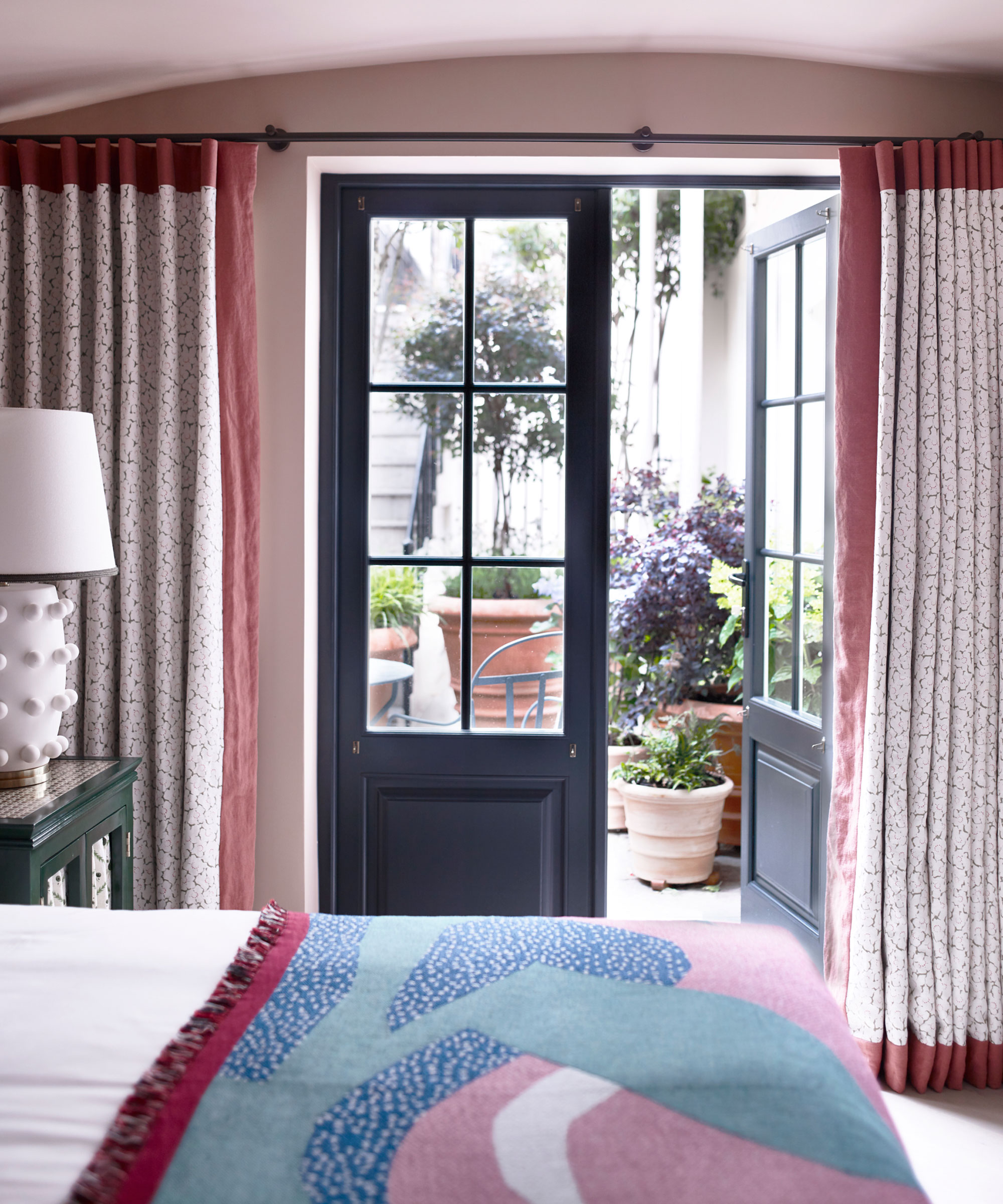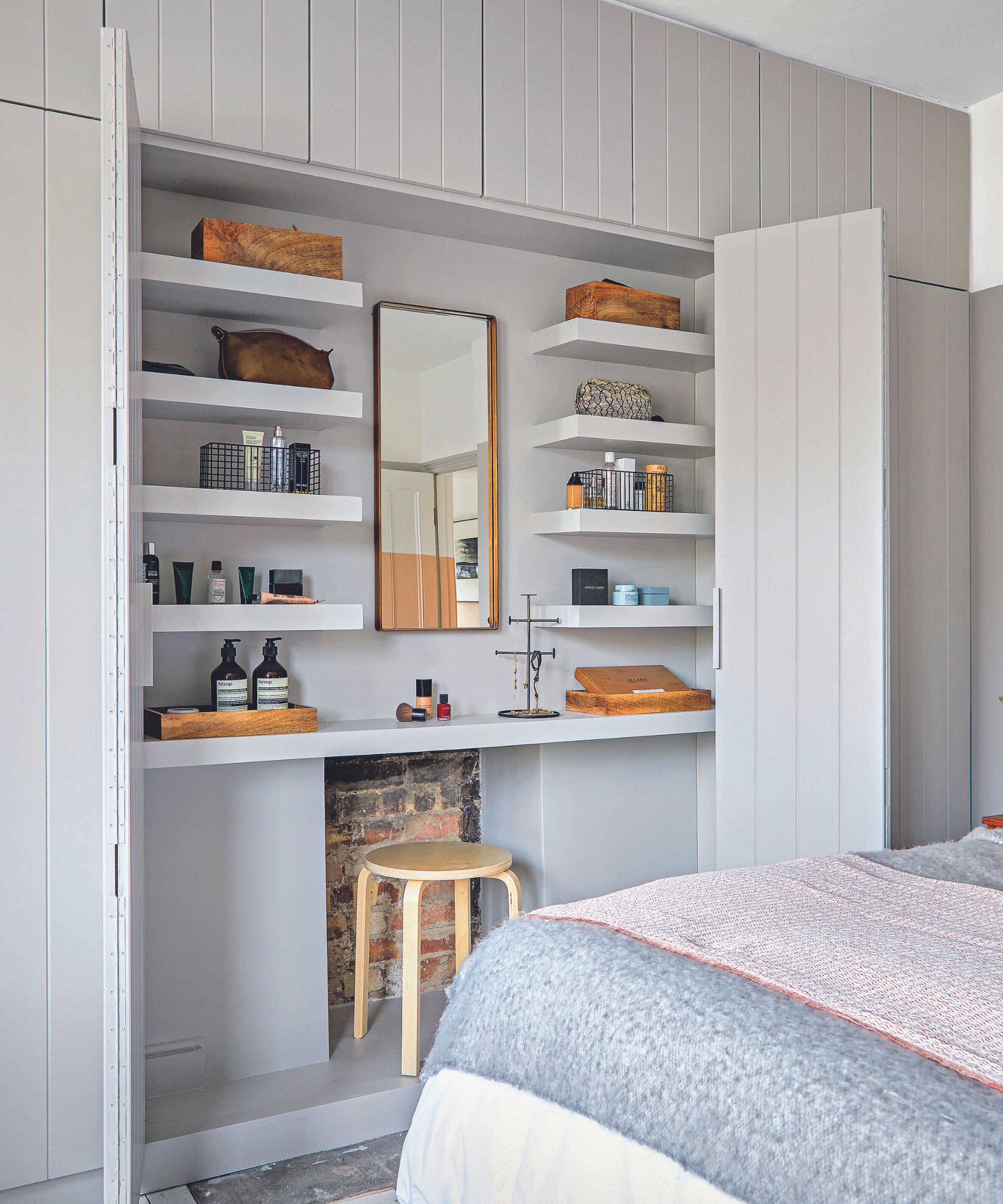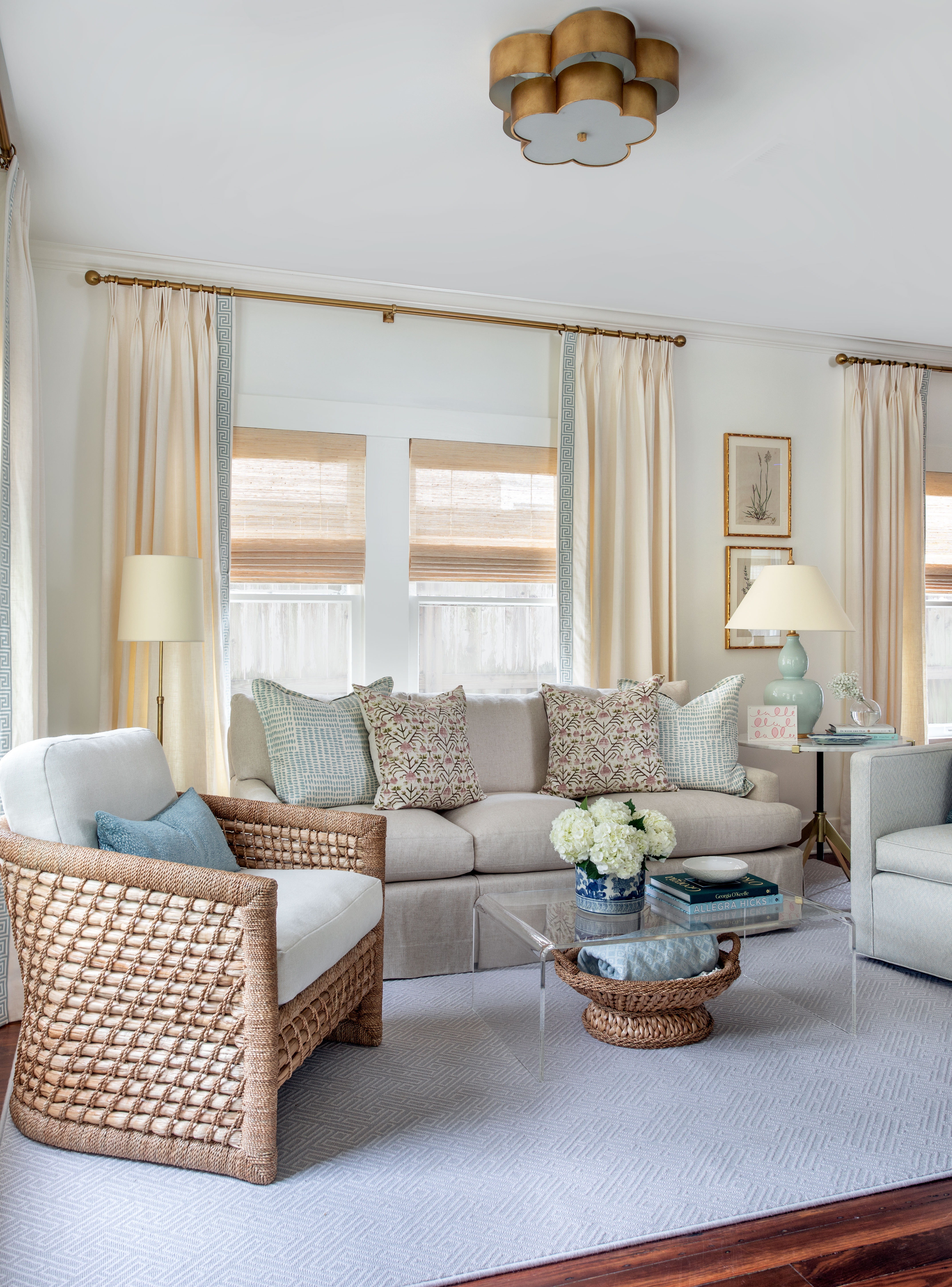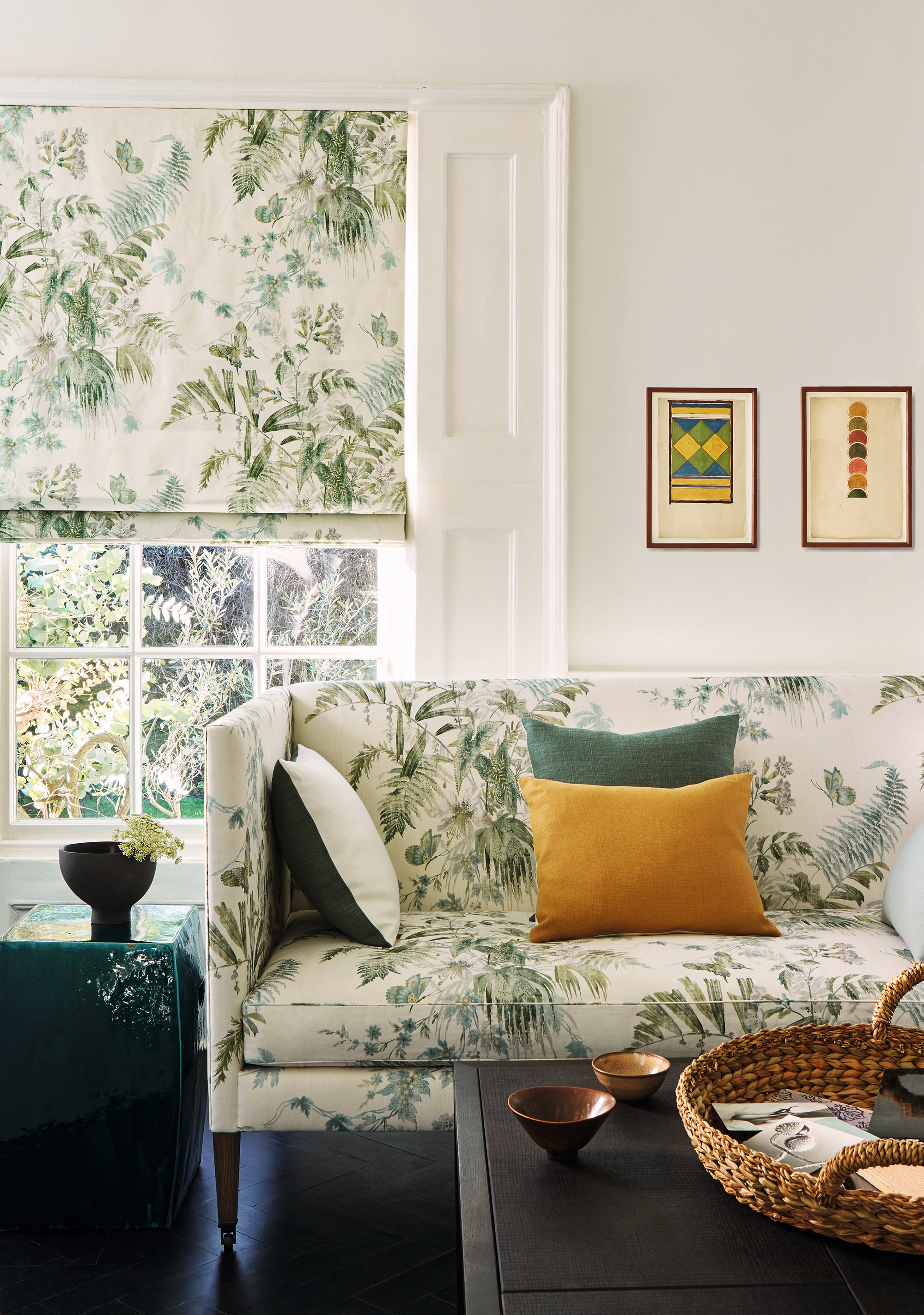How to make a small house look bigger – need-to-know design strategies
It is possible to make a small house look bigger if you learn from the professionals, and these are their secrets


Need to make a small house look bigger? Petite can be beautiful, of course, but what’s not desirable is feeling as if the home lacks space and is therefore cluttered by all the furniture that’s required, and that decor choices are compromised by its proportions.
The solution is clever small room ideas, which can save a compact home from seeming cramped and even cheat its dimensions so it appears larger than it really is, plus allow you to express your individuality and create beautifully detailed decoration.
Here, we’ve put together interior design tips from the professionals who know how to make a small house look bigger to bring to your own home.
For small windows, see our guide on what do you put on a small kitchen window?
How to make a small house look bigger
A home with a low square footage doesn’t have to feel restricted nor look over-filled with furniture. And you don’t have to be conservative with decor choices e ither – although they should be considered. So whether you're working with a small living room, small kitchen or a small bedroom in a family home, you can make the space work best for you. These are the methods designers use to make a small room look bigger in a tiny home.
1. Go higher with window treatments

Putting the focus on horizontals or verticals can change the perception of the space in the rooms of a small house. One way of achieving this is with window dressings.
‘With your window treatments hang them closer to the ceiling to create a sense of a more vertical room,’ says Amy Youngblood, principal designer of Amy Youngblood Interiors.
Design expertise in your inbox – from inspiring decorating ideas and beautiful celebrity homes to practical gardening advice and shopping round-ups.
Because natural light will make the room feel bigger, make sure that curtains can be gathered to either side of the window during the day to maximize the light reaching the room. Be sure to clean windows regularly, too.
2. Favor bespoke storage

An overcrowded home can never feel spacious. ‘Keeping clutter at bay is the secret to making a small home look and feel bigger,’ says Irene Gunter, founder of Gunter & Co. ‘My number one tip to achieving this is with made-to-measure cabinetry. Tailored to the dimensions of your space, the cabinetry can be designed to work round any quirks, such as a sloping ceiling or an awkward corner. Plus, going bespoke means that the internal layout can be adapted according to what you want to store.
‘I recommend taking cabinetry all the way to the ceiling, making the most of what would otherwise be dead space. This is particularly effective in this small bedroom (above) where we wallpapered the wardrobe doors with the same Phillip Jeffries wallpaper used on the walls. This created a cohesive feel with very few distractions for the eye – a savvy way to increase the sense of space.’ It also makes a small bedroom look bigger, too.
3. Size rugs correctly

Introducing a rug that’s small into a small house is a trap for the unwary. ‘Use rugs that are as large as possible for the room and make sure at least the front legs of all furniture is on the rug,’ advises Emily Ruff, owner and principal designer of Cohesively Curated Interiors.
‘Larger furniture and less of it tends to make small spaces feel much bigger. If you have too many small pieces in a room, it will instantly feel overcrowded.’ This is also a smart way to make a small living room look bigger.
4. Use the power of glass

Take the opportunity to introduce glass where you can to make a small house look bigger.
‘For a small house I designed in Chelsea, I created spaces that were enveloped in glass,’ says BIID registered interior designer Hedayat Taymour, design director at JAM by Hedayat and founding partner at Eklego Design.
‘I turned an old inoperable window into a fixed glass wall with glass shelves so that the space looks as though it were spilling outwards. I also used translucent opaque glass panels to let in more light and frame some of the client’s precious artifacts.’
5. Think double duty

Opt for pieces that don’t just fulfill one role in a small house. ‘Get creative with storage – vintage baskets that double as decor are always a good idea,’ says Katie Davis of Katie Davis Design in Houston, Texas.
Think, too, about the impact of furniture. ‘In this living room, we opted for an acrylic table that doesn’t take up too much space visually,’ she says.
6. Plan in negative space

The areas in between the elements of a room design are crucial to ensure a small home doesn’t feel small.
'Wherever possible, create a sense of negative space around furniture and objects in the room,’ says Martin Waller, founder of Andrew Martin. ‘For example, choose a sofa on taller legs to reveal more floor space.
‘Materials like reclaimed wood, brushed linen and glass also work well to lift a look and play with the eye to create the feeling of openness.'
7. Work with one color

Consider using a single paint shade to stretch a space. ‘In a small room, a bright white ceiling will draw attention to the line where the walls stop and the ceiling starts, therefore emphasizing the size of your space,’ says Irene Gunter.
‘An easy solution is to use the same color on the walls, woodwork and ceiling. This instantly makes a space feel more unified. Plus, by eliminating color contrasts that distract the eye, you can make a space look and feel bigger.
‘Remember, this idea doesn’t just work with lighter, brighter colors,’ she adds. ‘Wrapping a space in moody hues can make a room feel cozy and cocooning.’
8. Plan lighting that’s space expanding

Lighting is an important part of a successful design for a small house. ‘When it comes to making a small space look larger, effective lighting is very often overlooked,’ says Jamie Moxley, lighting expert at Dusk Lighting.
‘Recessed wall and ceiling lights free the room of clunky shades. If a room is tall enough, some pendant lights with long hanging cords help draw the eye upwards allowing for a more open feel to the room; using a light with glass in its shade design also helps create a free-flowing space.
‘Using a minimalist-style light will help with opening up a room, concentrating on the light emitted rather than the fitting itself.’ This method is particularly effective for making a small kitchen look bigger, but will also help to make a small bathroom look bigger, too.
9. Zone with furniture

Small homes often feature multifunctional rooms, and here careful planning of furniture positions can elegantly zone the area.
‘A common default is to push all furniture up against our walls, but this isn’t always the most effective use of space,’ says Courtney Osborne, interior designer & co-founder, Nixon & Co. ‘Using the back of a couch is a great way to separate a dining room from a living room.’
Narrow room like the one above? Use the arm of the couch for the same purpose.
10. Fall for blue

If you’re looking for a color that’s space expanding, consider the merits of blue. ‘Blue is the best color for making a space feel bigger,’ says color and paint expert Annie Sloan.
‘It’s recessive, which means it draws the eye outwards, blurs horizon lines and gives a sense of never-ending space. It’s also a calming, meditative color which encourages us to breathe in and out, creating a psychological and spiritual sense of space as well as the physical illusion.’

Sarah is a freelance journalist and editor. Previously executive editor of Ideal Home, she’s specialized in interiors, property and gardens for over 20 years, and covers interior design, house design, gardens, and cleaning and organizing a home for Homes & Gardens. She’s written for websites, including Houzz, Channel 4’s flagship website, 4Homes, and Future’s T3; national newspapers, including The Guardian; and magazines including Future’s Country Homes & Interiors, Homebuilding & Renovating, Period Living, and Style at Home, as well as House Beautiful, Good Homes, Grand Designs, Homes & Antiques, LandLove and The English Home among others. It’s no big surprise that she likes to put what she writes about into practice, and is a serial house renovator.